In the culinary world, a dry ounce is a vital measurement unit for ingredients such as flour, sugar, or spices. It is equivalent to 28.35 grams or approximately 2 tablespoons.
It’s important to note that a dry ounce measures weight and not volume, setting it apart from its counterpart, the fluid ounce. We’ll start by explaining what a dry ounce is and then delve into the art of measuring ingredients with teaspoons. Additionally, we’ll give examples of common dry ingredients and their teaspoon-to-ounce conversions, along with useful tips for accurate measuring.
You’ll also learn about the benefits of using a kitchen scale for precise measurements. This handy guide lets you say goodbye to recipe mishaps and confidently measure your ingredients. We’ll also discuss how many tsp in a dry ounce.
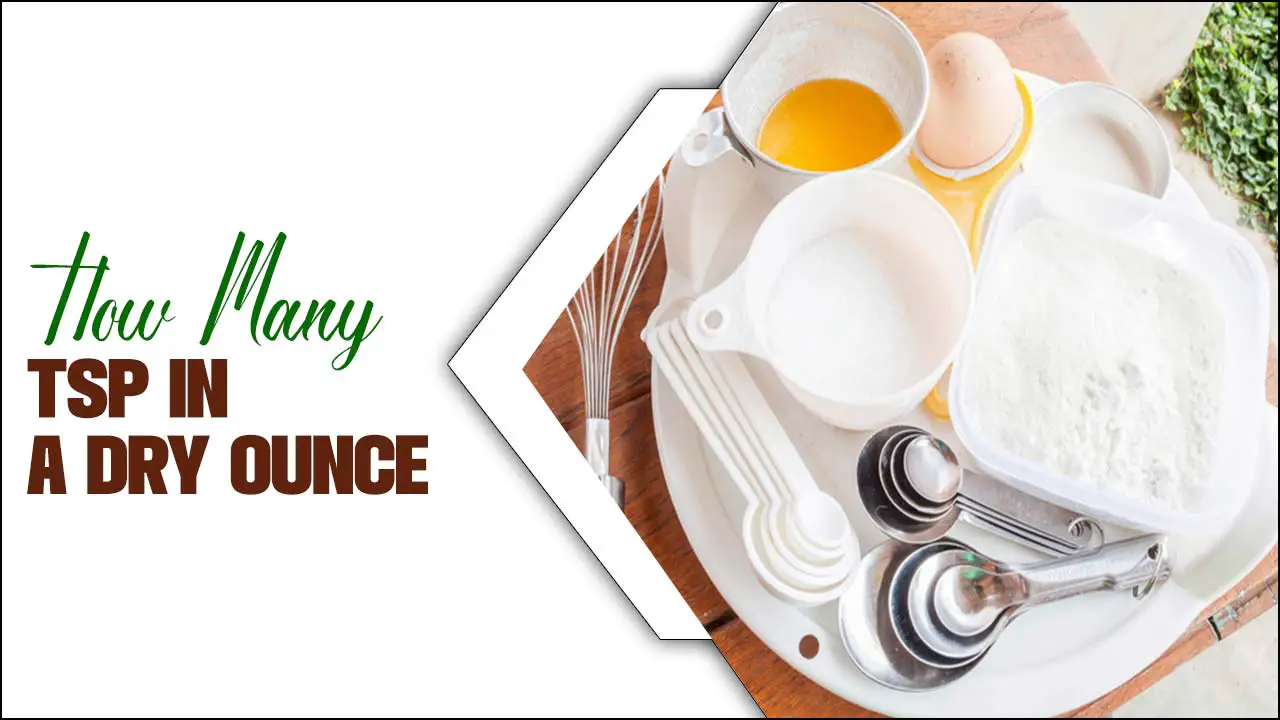
How Many Tsp In A Dry Ounce – Mastering Measurements
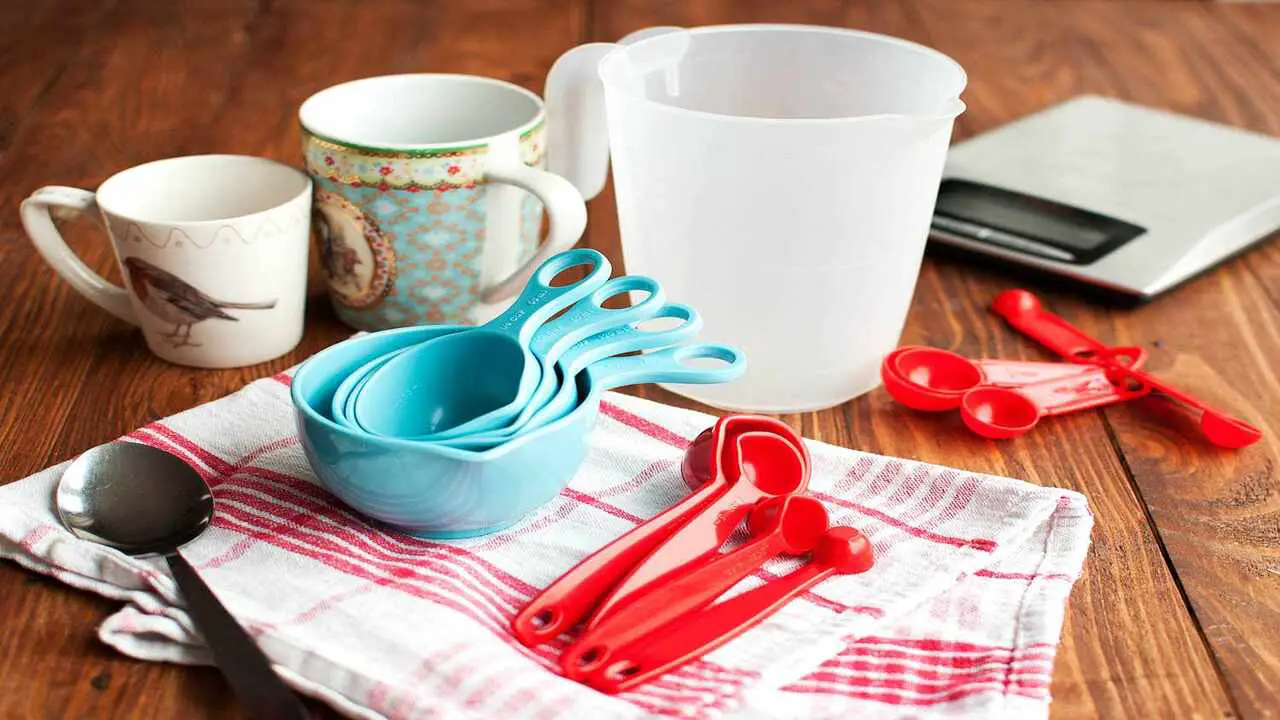
When mastering measurements in the kitchen, understanding the conversion factor for dry ounces to teaspoons is essential. Converting between these units is straightforward, with one dry ounce equivalent to approximately 6 teaspoons.
This knowledge lets you accurately measure and portion dry ingredients like flour or spices in your recipes. Along with this conversion factor, having a good grasp of common kitchen measurements and conversions and tips and tricks for precise ingredient measurement will ensure that your dishes turn out delicious every time. Scroll down to get into details how many tsp in a dry ounce.
How Teaspoons Are Used For Measuring Dry Ingredients
Teaspoons are essential for accurately measuring small quantities of dry ingredients such as spices or baking powder in cooking and baking. Their small size allows for precise measurements, ensuring that recipes are made with accurate proportions.
When using a teaspoon to measure dry ingredients, it is important to level off the ingredient to maintain accuracy. Depending on the desired outcome, some recipes may specify whether the measurement should be leveled or heaped. It can also be helpful to understand the conversion of teaspoons to dry ounces for conversions and adjustments based on individual needs and preferences.
The Conversion Ratio Between Teaspoons And Dry Ounces
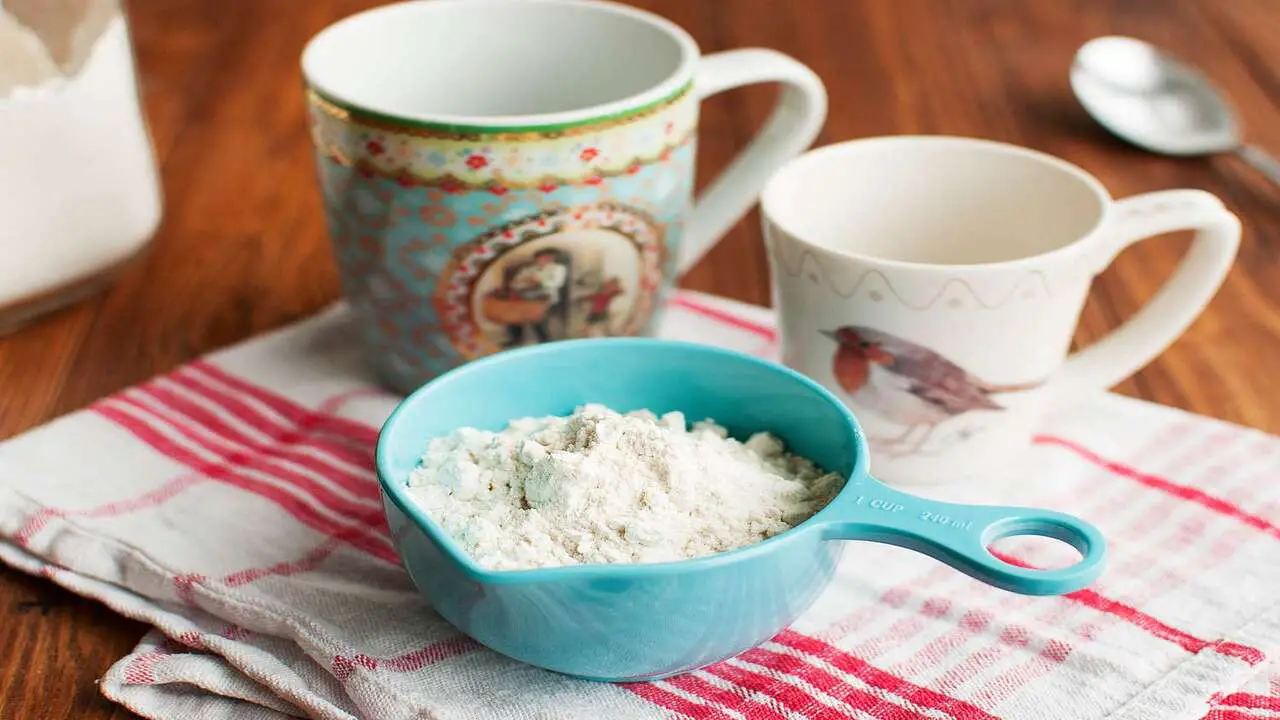
In the culinary arts realm, a solid grasp of the conversion ratio between teaspoons and dry ounces is crucial for accurate measurements of ingredients. To be precise, there are 6 teaspoons in a dry ounce, based on the standardized measurement of 1 teaspoon, equating to 0.1667 fluid ounces.
This conversion ratio is essential for achieving consistent and reliable results when following recipes. We advise using appropriate measuring tools, such as a measuring cup or kitchen scale, to ensure accuracy. By mastering this conversion, you can confidently explore the culinary world and create delectable dishes with confidence.
Examples Of Common Dry Ingredients And Their Teaspoon To Ounce Conversions
When measuring dry ingredients, having the correct conversions is important to ensure your recipe turns out just right. Here are some examples of common dry ingredients and their teaspoon to ounce conversions. Remember that these conversions are approximate and may vary slightly depending on the density of the ingredient. It’s always best to use a kitchen scale for precise measurements when baking or cooking.
- Salt: 1 teaspoon of salt is equal to approximately 0.18 ounces.
- Sugar: 1 teaspoon of sugar is equal to approximately 0.16 ounces.
- Flour: 1 teaspoon of flour is equal to approximately 0.14 ounces.
- Baking powder: 1 teaspoon of baking powder equals approximately 0.18 ounces.
- Cocoa powder: 1 teaspoon of cocoa powder equals approximately 0.13 ounces.
Tips For Accurately Measuring Dry Ingredients In Teaspoons And Ounces
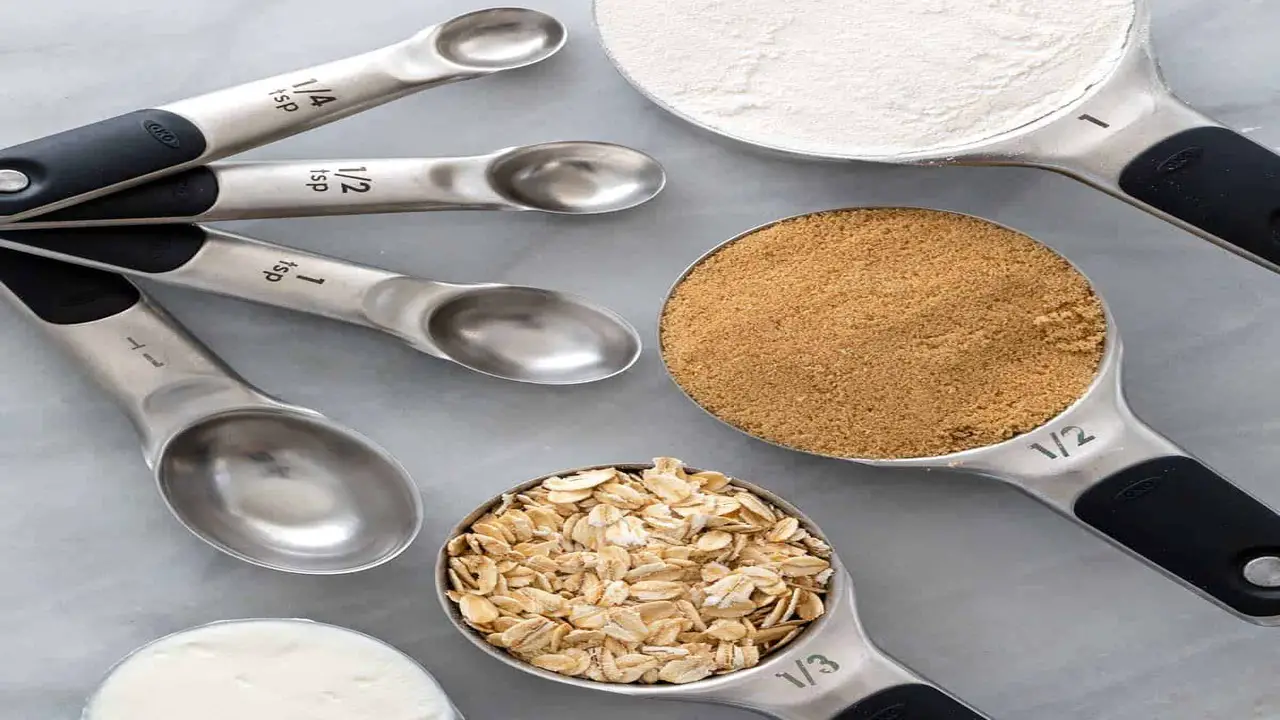
To ensure accurate measurements of dry ingredients in teaspoons and ounces, it is recommended to use a measuring spoon for precise teaspoon measurements. A kitchen scale should be used to measure dry ounces to obtain precise and consistent results.
It is important to remember that the ingredient’s density can affect the measurements, so it’s always a good idea to double-check with the appropriate tools. To convert between teaspoons and dry ounces, a conversion chart or online calculator can be used for convenience. Taking your time and practicing will help you achieve accurate measurements for delicious meals.
Using A Kitchen Scale For Precise Measurements
When it comes to precise measurements in the kitchen, using a kitchen scale can be a game-changer. Instead of relying solely on measuring spoons, a kitchen scale allows you to accurately measure dry ingredients by weight, providing more consistent results.
Not only does this save time, but it also eliminates the need for multiple measuring spoons. The tare function on a scale makes it easy to subtract the weight of the container, ensuring that you’re only measuring the ingredient itself.
You can convert grams to teaspoons using a conversion chart or online calculator for even greater accuracy. With the right tools, you can confidently achieve exact measurements and create delicious meals.
Converting Recipes From Teaspoons To Ounces Or Vice Versa
When converting recipes from teaspoons to ounces or vice versa, it’s important to understand the conversion ratio between the two units of measurement. To convert from teaspoons to ounces, divide the teaspoons by 6 to get the equivalent in dry ounces.
On the other hand, to convert from ounces to teaspoons, multiply the number of ounces by 6 to get the equivalent in teaspoons. Accurate measurements are crucial when converting recipes to ensure consistent results. Using spoons and a kitchen scale for precise measurements is recommended. Understanding the conversion ratio is also helpful when scaling recipes up or down.
Common Mistakes To Avoid When Measuring Dry Ingredients
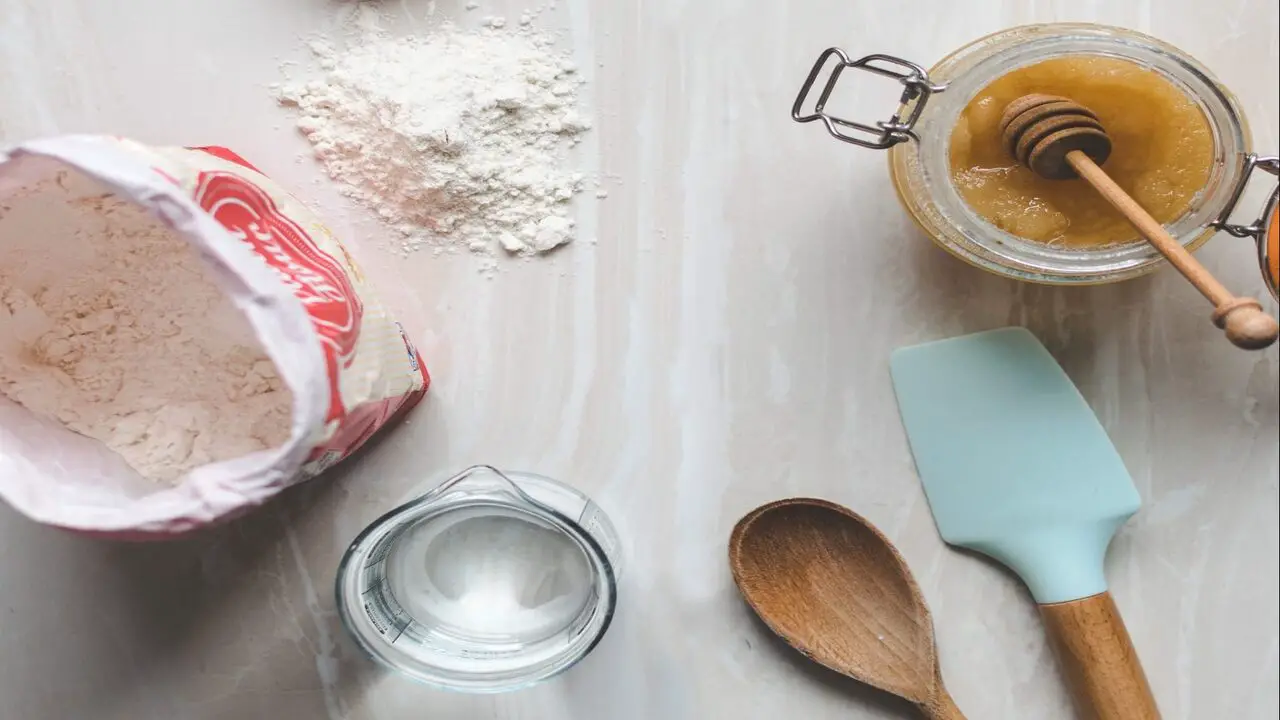
It’s important to avoid common mistakes that could lead to inaccurate measurements when measuring dry ingredients. One common mistake is using a liquid measuring cup instead of a dry measuring cup, which can result in incorrect amounts. Another mistake is scooping dry ingredients directly from the container, as this can lead to compacted ingredients and too much being measured.
It’s crucial to level off dry ingredients when measuring to ensure accuracy. Additionally, estimating measurements rather than using a precise measuring tool can result in inconsistent results. Finally, neglecting to convert between different units of measurement properly can cause confusion and incorrect amounts.
Importance Of Accurate Measurements In Cooking And Baking
Accurate measurements are essential in the world of cooking and baking as they directly contribute to the success of culinary endeavors. Even a small variation in measurements can greatly affect the taste and texture of the final dish.
You ensure consistency and achieve replicable results by using the correct ingredients. Precise measurements are crucial when following recipes or experimenting with new dishes. Mastering measurements allows you to adjust recipes based on personal preferences or dietary restrictions confidently and helps develop your own unique culinary creations.
Understanding the importance of accurate measurements enables you to create delicious meals with the perfect balance of flavors and textures. Precision is key to achieving culinary excellence, whether measuring flour for a cake or carefully portioning spices for a curry.
Conclusion
Mastering measurements is crucial in cooking and baking. Understanding the conversion ratio between teaspoons and dry ounces allows you to measure ingredients and follow recipes accurately. Whether you’re measuring spices, herbs, or other dry ingredients, clearly understanding the teaspoon to ounce conversion helps you achieve consistent and delicious results.
Using a kitchen scale can also provide precise measurements for your recipes. Avoid common mistakes like packing ingredients too tightly or using the wrong measuring tools. Accurate measurements are important for the success of your dishes, ensuring that they turn out just how you intended.
So, next time you’re in the kitchen, confidently measure your ingredients and create culinary delights with precision and ease. We hope you now understand how many tsp in a dry ounce.
Frequently Asked Questions
1.What Is 1 Oz In Baking?
Ans: In baking, the measurement of 1 oz is roughly equal to 2 tablespoons. However, remember that this can vary depending on the specific ingredient being measured. It’s always best to consult a recipe or conversion chart to ensure accuracy. When measuring dry ingredients, remember to level them off for precise results.
2.What About How Many Teaspoons In A Tablespoon?
Ans: In most recipes and measurements, there are 3 teaspoons in a tablespoon. This conversion is crucial for accurate ingredient measurements in cooking and baking. Remember that teaspoon-to-tablespoon conversion may vary in different countries or regions.
3.Are There 10 Teaspoons In An Ounce?
Ans: No, there are not 10 teaspoons in an ounce. In fact, there are approximately 6 teaspoons in a dry ounce. However, it’s important to note that the exact conversion may vary depending on the ingredient being measured. To ensure accuracy, always refer to a reliable conversion chart or tool.
4.Which Teaspoon Size Should I Use When Cooking?
Ans: The recommended teaspoon size for cooking is 1 teaspoon (tsp). However, recipes may call for different sizes. Always use the same size consistently and refer to the recipe instructions for specific teaspoon measurements.
5.How Do You Measure 1 Oz Dry?
Ans: To measure 1 oz of dry ingredients, use a measuring scale or a specifically designed measuring cup. Place the empty cup on the scale and reset it to zero. Add the dry ingredient until the scale reads 1 oz. Remember to level off the top for accuracy.